- Home
- Neal Stephenson
Seveneves Page 3
Seveneves Read online
Page 3
He always called it the breakup of the moon. Not the explosion. The term began to gain traction on Twitter, with hashtag #BUM. Whatever you called it, it was an infinitely bigger deal than a single meteor strike. So it seemed to demand more explanation. But there was no way to explain it, yet. Meteors were easy: space was full of rocks too small and dark to be seen through telescopes, and some of them snagged on the atmosphere and fell to ground. But the breakup of the moon could not have been caused by any normal astronomical phenomenon. So Doc Dubois—who spent most of the next week on camera—got out in front of that issue at every chance, always leading with a frank statement that neither he nor any other astronomer knew the cause. That was the pitch, straight down the middle. Then he added the spin: This is absolutely fascinating. It is, as a matter of fact, the most fascinating scientific event in human history. It looks scary and upsetting, but the fact is that no one has been killed by it, save for a few drivers who swerved off roads, or rear-ended stopped traffic, while rubbernecking.
At A+0.4.16 (four days and sixteen hours after the breakup of the moon), he had to amend “no one has been killed” when a meteorite, almost certainly a chunk of moon rock, entered the atmosphere over Peru, shattered windows along a twenty-mile track, and smashed into a farmstead, obliterating a small family.
But the message remained the same: let’s look at this as a scientific phenomenon and start with what we know. His friend was a video streaming site called astronomicalbodiesformerlyknownasthemoon.com, which kept a high-resolution feed of the rubble cloud running around the clock. As soon as possible in the interview, Doc Dubois would get that up on the screen and then begin making observations about the cloud. Because making observations calmed people down. The moon had broken up into seven large pieces, which inevitably became known as the Seven Sisters, and an uncountable number of smaller ones. Gradually the big ones acquired names. Doc Dubois was responsible for many of these. He gave them descriptive names that wouldn’t scare people. It wouldn’t do to call them Nemesis or Thor or Grond. So instead it was Potatohead, Mr. Spinny, Acorn, Peach Pit, Scoop, Big Boy, and Kidney Bean. Doc Dubois would point those out and then draw attention to the way they moved. This was governed entirely by Newtonian mechanics. Each piece of the moon attracted every other piece more or less strongly depending on its mass and its distance. It could be simulated on a computer quite easily. The whole rubble cloud was gravitationally bound. Any shrapnel fast enough to escape had done so already. The rest was drifting around in a loose huddle of rocks. Sometimes they banged into one another. Eventually they would stick together and the moon would begin to re-form.
Or at least that was the theory until the star party that they threw in the middle of the Caltech campus at A+0.7.0, exactly one week after the event.
Normally they held the star parties up in the hills, where the seeing was better, but seeing giant rocks close to the Earth was so easy that there was no need to go to the trouble of driving up into the mountains. It would have undercut the purpose of the event, which was to get as many members of the general public as possible out in a parklike atmosphere to peer through telescopes and make observations. The Beckman Mall was lined with yellow school buses, interspersed here and there with vans from local and network television, their masts deployed so that they could relay live video downtown. Their reporters stood in pools of light, using as backdrop an open green strewn with telescopes of various types and sizes. Little seven-card decks were handed out, each card depicting a different fragment of the moon from various angles and identifying it by its name. Kids were given the assignment to identify each of the rocks through the eyepiece of a telescope, check it off on a homework sheet, and write down an observation about it. Most of the scopes, obviously, were pointed at the Seven Sisters, but one contingent was looking at a darker part of the sky with binoculars or just their naked eyes, expecting to see meteorites. By Day 7, several hundred of these had entered the atmosphere. Or at least, several hundred large enough to be noticed. Most had burned up before hitting the ground. There had been about a score of incidents in which they drew arc-light trails across the sky, illuminating the ground below with freaky bluish radiance and producing huge sonic booms. Half a dozen had struck the ground, doing greater or lesser amounts of damage. The death toll, though, was still far beneath the statistical ground clutter of shark attacks and lightning strikes.
The evening went fine. Doob, who had raised three children to adulthood, had figured out a long time ago that any event largely organized by elementary school teachers was likely to come off extremely well from a logistical and crowd-control standpoint. So he was able to relax and be Doc, autographing Seven Sisters cards for kids and occasionally slipping into Dr. Harris mode for a discussion with a fellow astronomer.
As he wandered about the place, he had three different chance encounters with the same elementary school teacher, one Ms. Hinojosa, and fell in love with her. This was unusual. He had not been in love with anyone in twelve years. He had been divorced for nine. He found it nearly as shocking in its own way as the breakup of the moon. He tried to deal with it in the same way: by making scientific observations of the phenomenon. His working hypothesis was that the breakup of the moon had made Doob young again, exfoliating layers of emotional callus from his soul and leaving a pink shiny impressionable heart just waiting to be colonized by the first appealing woman who came along.
He was talking to Amelia—for that, as it turned out, was her first name—when a buzz moved slowly over the quad, like a gentle breeze, and caused everyone to look up.
Two of the larger pieces—Scoop and Kidney Bean—were headed right for each other. It would not be the first such collision. They happened all the time. But seeing two big chunks heading right for each other with high closing velocity was unusual, and promised a good show. Doob tried to quiet an unsettled feeling in his chest, which might have been caused by what was happening with Amelia, or by the natural trepidation that any sane person would feel upon seeing two enormous pieces of rock getting ready to smash into each other directly overhead. The good news was that people were beginning to treat the evolution of the swarm as a kind of spectator sport, to see it as fascinating and fun, not terrifying.
Scoop’s sharper edge slammed into the divot that gave Kidney Bean its name and split it in half. It all happened, of course, in quiet super-slow motion.
“And then there were eight!” Amelia said. Instinctively she had turned away from Doob and toward her brood of twenty-two students. “What just happened to Kidney Bean?” she was asking, in that teacherly way, scanning for upraised hands, looking for a kid to call on. “Can anyone tell me?”
The kids were silent and vaguely sick looking.
Amelia held up her Kidney Bean card and tore it in half.
Dr. Harris was walking toward his car. His phone rang, so startling him that he almost swerved into a school bus. What was wrong with him? His scalp was tingling, and he realized it was his hairs trying to stand up on his head. He checked the screen of the phone and saw that the call was from a colleague in Manchester. He declined to answer it and found himself looking at a new contact that he had been creating for Amelia: a snapshot of her face, just a silhouette in profile against a bank of TV lights, and her phone number. He tapped the Done button.
He had felt that tingling in the scalp once before, on a safari in Tanzania, and had turned around to see that he was being watched, interestedly, by a group of hyenas. The thing that had scared him hadn’t been the hyenas themselves. Those, and even more dangerous animals, were all over the place. Rather, it was the sudden awareness that he had let his guard down, that he had been focusing his attention on the wrong thing while the real danger had been circling around behind him.
He had wasted a week on the fascinating scientific puzzle of “What blew up the moon?”
That had been a mistake.
Scouts
“WE NEED TO STOP ASKING OURSELVES WHAT HAPPENED AND START talking about what is
going to happen,” Dr. Harris said to the president of the United States, her science advisor, the chairman of the Joint Chiefs of Staff, and about half of the Cabinet.
He could see that the president didn’t like that. Julia Bliss Flaherty, currently nearing the end of her first year on that job.
The chairman of the JCS was nodding, but President Flaherty was giving him a hard, squinting look, and not just because of the light coming in the window from the skies over Camp David. She thought he was up to something. Trying to shift blame. Trying to push some kind of new agenda. “Go on,” she said. Then, remembering her manners, “Dr. Harris.”
“Four days ago I watched Kidney Bean break in half,” Doob said. “The Seven Sisters became eight. Since then, we’ve seen a near miss that could have fractured Mr. Spinny.”
“I would almost welcome it,” said the president, “if we could get rid of those ridiculous names.”
“It’ll happen,” Doob said. “The question is, how long does Mr. Spinny have to live? And what does that tell us?” He clicked a small remote in his hand and brought up a slide on the big screen. Heads turned toward it and he felt a mild sense of relief at not being stared at anymore by the president. The slide was a montage of a snowball rolling down a hill, a fuzzy bacterial culture growing in a petri dish, a mushroom cloud, and other seemingly unrelated phenomena. “What do these all have in common? They are exponential,” he said. “The word gets tossed around a lot by people who use it to mean anything that’s getting big fast. But it has a specific mathematical meaning. It means any process where the more it happens, the more it happens. The population explosion. A nuclear chain reaction. A snowball rolling down a hill, whose speed of growth is pegged to how much it’s grown.” He clicked through another slide showing plots of exponential curves on a graph, then to an image of the moon’s eight pieces. “When the moon had only one piece, the probability of a collision was zero,” he said.
“Because there was nothing to collide with,” Pete Starling, the president’s science advisor, explained. The president nodded.
“Thank you, Dr. Starling. When you have two pieces, why then, yes, they can collide. The more pieces you get, the higher the chances of any two pieces banging into each other. But what happens when they bang into each other?” He clicked the control again and showed a little movie of Kidney Bean’s breakup. “Well, sometimes, but not always, they break in half. Which means you have more pieces. Eight instead of seven. Nine instead of eight. And that increase in number means an increase in the odds of further collisions.”
“It’s an exponential,” said the chairman.
“It occurred to me four days ago that it did have all the earmarks of an exponential process,” Doob allowed. “And we know what happens to those.”
President Flaherty had been watching him intently but she now flicked her eyes over at Pete Starling, who made a dramatic upward zooming gesture with one hand, tracing the profile of a hockey stick.
“When an exponential hits the bend in the hockey stick curve,” Doob said, “the result can be indistinguishable from a detonation. Or it can look like a slow, steady increase. It all depends on the time constant, the inherent speed with which the exponential thing happens. And on how we perceive it as humans.”
“So it might be nothing,” said the chairman.
“It could be that a hundred years will pass before we go from eight chunks to nine chunks,” Doob said, nodding at him, “but four days ago I got worried that it might be one of those things that looks more like an explosion. So my grad students and I have been crunching some numbers. Building a mathematical model of the process that we can use to get a handle on the time scale.”
“And what are your results, Dr. Harris? I assume you have some, or else you wouldn’t be here.”
“The good news is that the Earth is one day going to have a beautiful system of rings, just like Saturn. The bad news is that it’s going to be messy.”
“In other words,” said Pete Starling, “the chunks of the moon are going to keep banging into each other indefinitely and breaking up into smaller and smaller pieces, spreading out into a system of rings. But some rocks are going to fall on the ground and break things.”
“And can you tell me, Dr. Harris, when this is going to happen? Over what period of time?” the president asked.
“We’re still gathering data, tuning the model’s parameters,” Doob said. “So my estimates could all be off by a factor of two, maybe three. Exponentials are tricky that way. But what it looks like to me is this.”
He clicked through to a new graph: a blue curve showing a slow, steady climb over time. “The time scale at the bottom is something like one to three years. During that time, the number of collisions and the number of new fragments are going to grow steadily.”
“What is BFR?” asked Pete Starling. For the graph’s vertical scale was labeled thus.
“Bolide Fragmentation Rate,” Doob said. “The rate at which new rocks are being produced.”
“Is that a standard term?” Pete wanted to know. His tone was not so much hostile as unnerved.
“No,” Doob said, “I made it up. Yesterday. On the plane.” He was tempted to add something like I am allowed to coin terms but didn’t want things to get snarky this early in the meeting.
Seeing that Pete had been silenced, at least for a moment, Doob tried to get back into his rhythm. “We’ll see an increasing number of meteorite impacts. Some will cause great damage. But overall, life is not going to change that much. But then”—he clicked again, and the plot bent sharply upward, turning white—“we are going to witness an event that I am calling the White Sky. It’ll happen over hours, or days. The system of discrete planetoids that we can see up there now is going to grind itself up into a vast number of much smaller fragments. They are going to turn into a white cloud in the sky, and that cloud is going to spread out.”
Click. The graph continued shooting upward, rocketing up into a new domain and turning red.
“A day or two after the White Sky event will begin a thing I am calling the Hard Rain. Because not all of those rocks are going to stay up there. Some of them are going to fall into the Earth’s atmosphere.”
He turned the projector off. This was an unusual move, but it snapped them all out of PowerPoint hypnosis and forced them to look at him. The aides in the back of the room were still thumbing their phones, but they didn’t matter.
“By ‘some,’” Doob said, “I mean trillions.”
The room remained silent.
“It is going to be a meteorite bombardment such as the Earth has not seen since the primordial age, when the solar system was formed,” Doob said. “Those fiery trails we’ve been seeing in the sky lately, as the meteorites come in and burn up? There will be so many of those that they will merge into a dome of fire that will set aflame anything that can see it. The entire surface of the Earth is going to be sterilized. Glaciers will boil. The only way to survive is to get away from the atmosphere. Go underground, or go into space.”
“Well, obviously that is very hard news if it is true,” the president said.
They all sat and thought about it silently for a period of time that might have been one minute or five.
“We will have to do both,” the president said. “Go into space, and underground. Obviously the latter is easier.”
“Yes.”
“We can get to work building underground bunkers for . . .” and she caught herself before saying something impolitic. “For people to take refuge in.”
Doob didn’t say anything.
The chairman of the Joint Chiefs of Staff said, “Dr. Harris, I’m an old logistics guy. I deal in stuff. How much stuff do we need to get underground? How many sacks of potatoes and rolls of toilet paper per occupant? I guess what I’m asking is, just how long is the Hard Rain going to last?”
Doob said, “My best estimate is that it will last somewhere between five thousand and ten thousand years.”
�
�NONE OF YOU WILL EVER STAND ON TERRA FIRMA, TOUCH YOUR loved ones, or breathe the atmosphere of your mother planet again,” the president said. “That is a terrible fate. And yet it is a better fate than seven billion people trapped on the Earth’s surface can hope for. The last ship home has sailed. From now on, launch vehicles will rise up into orbit, but they will not go back for ten thousand years.”
The twelve men and women in the Banana sat in silence. Like the destruction of the moon itself, it was too big a thing for them to take in, too large for human emotion to get around. Dinah focused on trivia. Such as: just how damned good J.B.F.—the president—was at saying stuff like this.
“Dr. Harris,” said Konrad Barth, the astronomer. “I am sorry, Madam President, but is it possible to get Dr. Harris back into the picture?”
“Of course,” said Julia Bliss Flaherty, who, with some reluctance, stepped sideways, making room for the larger frame of Dr. Harris. Dinah thought that he looked shrunken and diminished compared to the famous TV scientist. Then she remembered what he had explained to them a few minutes ago, and felt uncharitable for having drawn that comparison. What must it have been like, to be the only man on Earth to know that the Earth was doomed?
“Yes, Konrad,” he said.
“Doob, I’m not disagreeing with your calculations. But has this been peer reviewed? Is there a chance that there is some basic error, a misplaced decimal point, something?”
Harris had begun nodding his head halfway through Konrad’s question. It was not a happy kind of nod. “Konrad,” he said, “it’s not just me.”
“We have signals intelligence suggesting that the Chinese figured it out a day before we did,” the president said, “and the British, the Indians, the French, Germans, Russians, Japanese—all of their scientists are coming to more or less the same conclusions.”
“Two years?” Dinah piped up. Her voice was hoarse, broken. Everyone looked at her. “Until the White Sky?”
“People seem to be converging on that figure, yeah,” Dr. Harris said. “Twenty-five months, plus or minus two.”

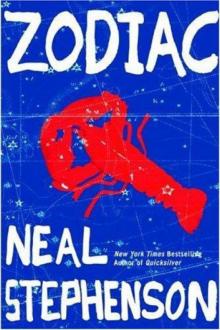 Zodiac: The Eco-Thriller
Zodiac: The Eco-Thriller The Mongoliad: Book One
The Mongoliad: Book One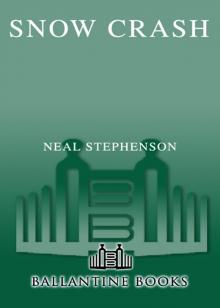 Snow Crash
Snow Crash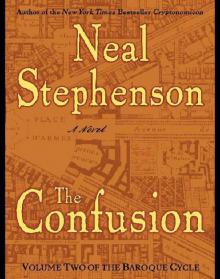 The Confusion: Volume Two of the Baroque Cycle
The Confusion: Volume Two of the Baroque Cycle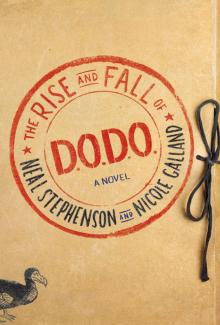 The Rise and Fall of D.O.D.O.
The Rise and Fall of D.O.D.O. The Diamond Age: Or, a Young Lady's Illustrated Primer
The Diamond Age: Or, a Young Lady's Illustrated Primer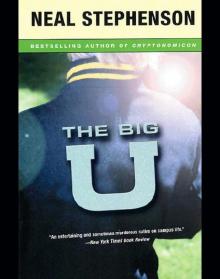 The Big U
The Big U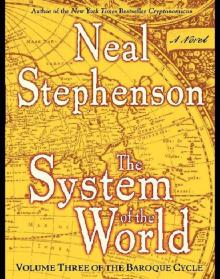 The System of the World: Volume Three of the Baroque Cycle
The System of the World: Volume Three of the Baroque Cycle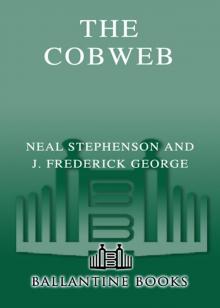 The Cobweb
The Cobweb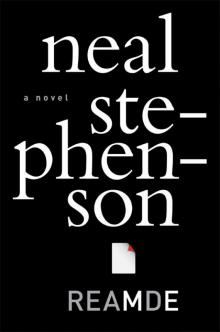 Reamde
Reamde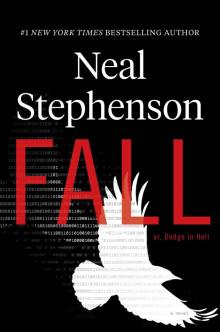 Fall; or, Dodge in Hell
Fall; or, Dodge in Hell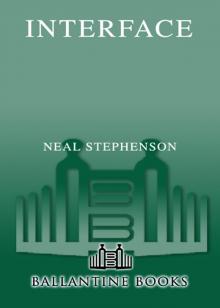 Interface
Interface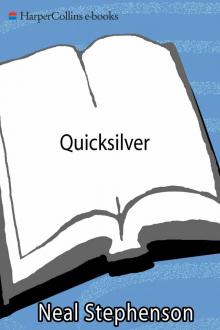 Quicksilver
Quicksilver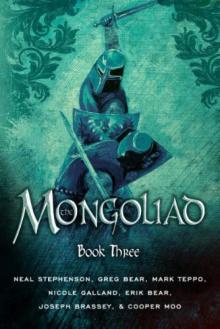 The Mongoliad: Book Three
The Mongoliad: Book Three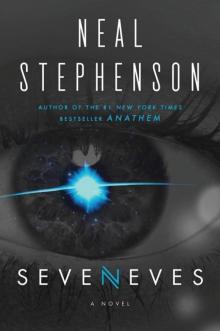 Seveneves
Seveneves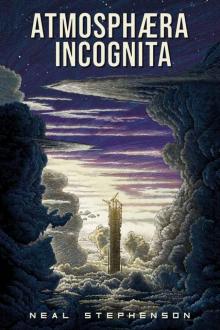 Atmosphæra Incognita
Atmosphæra Incognita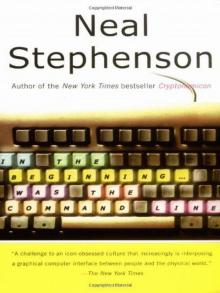 In the Beginning...Was the Command Line
In the Beginning...Was the Command Line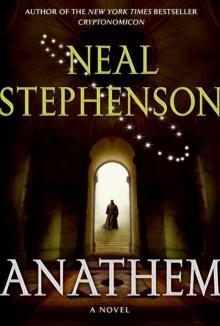 Anathem
Anathem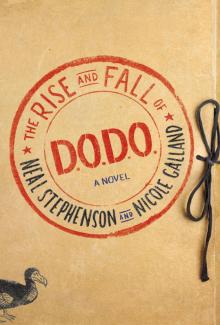 The Rise and Fall of D.O.D.O.: A Novel
The Rise and Fall of D.O.D.O.: A Novel The Mongoliad: Book Two
The Mongoliad: Book Two Diamond Age or a Young Lady's Illustrated Primer
Diamond Age or a Young Lady's Illustrated Primer THE System OF THE WORLD
THE System OF THE WORLD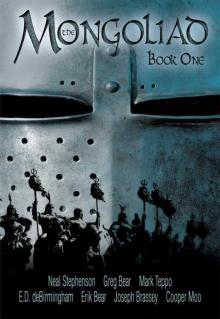 The Mongoliad: Book One tfs-1
The Mongoliad: Book One tfs-1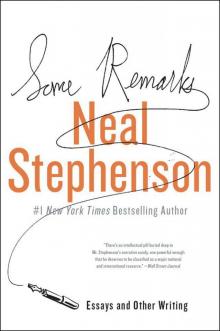 Some Remarks: Essays and Other Writing
Some Remarks: Essays and Other Writing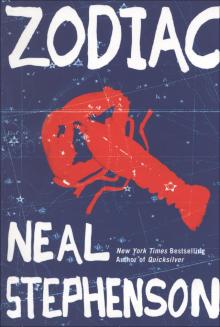 Zodiac
Zodiac Spew
Spew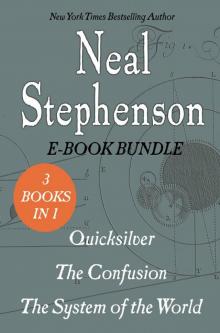 The Baroque Cycle: Quicksilver, the Confusion, and the System of the World
The Baroque Cycle: Quicksilver, the Confusion, and the System of the World The Diamond Age
The Diamond Age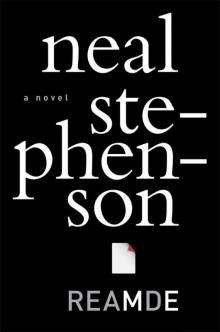 Reamde: A Novel
Reamde: A Novel In the Kingdom of Mao Bell
In the Kingdom of Mao Bell Mother Earth Mother Board
Mother Earth Mother Board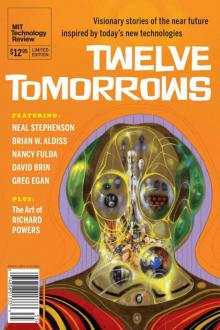 Twelve Tomorrows - Visionary stories of the near future inspired by today's technologies
Twelve Tomorrows - Visionary stories of the near future inspired by today's technologies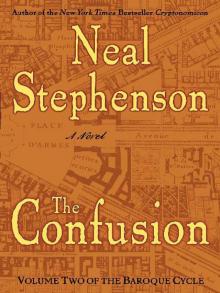 The Confusion
The Confusion The Great Simoleon Caper
The Great Simoleon Caper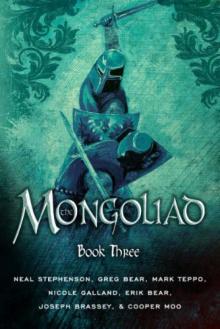 The Mongoliad: Book Three tfs-3
The Mongoliad: Book Three tfs-3